Do you have a question about the IBM eserver i5 and is the answer not in the manual?
Describes the on demand world's need for flexible IT infrastructure and how iSeries addresses complexity without it.
Details how Eserver i5 servers reduce complexity and enhance productivity through server consolidation.
Explains how to exploit i5/OS integration with IBM software and foster collaboration.
Focuses on clear upgrade paths and IBM Eserver On/Off Capacity on Demand.
Discusses the role of iSeries in the on demand world, emphasizing integration and autonomic computing.
Overview of iSeries servers as a total system, integrating hardware and software for business demands.
Describes aspects of the iSeries server architecture that contribute to its success.
Explains the concept of single-level storage and its benefits for iSeries applications.
Details TIMI, which insulates application programs from changing hardware characteristics.
Describes the POWER Hypervisor code layer for Eserver i5 servers, enabling virtualization.
Discusses the microprocessor design hierarchy and its role in integrating diverse environments.
Details the powerful and flexible I/O architecture of AS/400 and iSeries servers.
Highlights the iSeries server's history of designing key functions for hardware and software availability.
Explains how virtual technology enables resource sharing in an integrated, flexible computing environment.
Details AIX 5L V5.3 and V5.2 support in logical partitions on IBM Eserver i5.
Discusses the arrival and benefits of Linux as a platform for iSeries.
Explains the meaning of i5/OS as a single entity and its integrated functions.
Describes the concept of objects and their consequences for system independence and integrity.
Highlights DB2 UDB for iSeries features, open systems, and standards-based technology.
Explains how IBM i5/OS features can be used to create a Web presence with IBM WebSphere.
Describes Lotus Domino for iSeries as a leading groupware solution for collaborative on demand business.
Details the iSeries Navigator GUI for systems management tasks.
Highlights the capability to manage iSeries servers remotely via Internet-capable devices.
Describes the EZ-Setup application for simplifying iSeries server setup.
Explains Commercial Processing Workload (CPW) as a measure of iSeries and AS/400e processor performance.
Defines 5250 CPW as a value representing processing power for 5250 OLTP work.
Explains how multithreading allows a processor to handle multiple tasks concurrently.
Discusses IBM Eserver i5 and iSeries capacity on demand for activating processor resource.
Covers tools available for capacity planning and performance management with i5/OS V5R3.
Describes the Web-based estimation tool for recommending system configurations.
Explains the importance of sizing an iSeries server with appropriate disk arms.
Details the flexible options packages offered for iSeries servers.
Identifies specific functions IBM has committed to incorporate into future iSeries releases.
Identifies IBM's commitment to iSeries servers regarding design and technology plans.
Helps customers plan for changes and protect investments as business needs evolve.
Lists products and features withdrawn from IBM marketing.
Lists features and devices not supported with IBM i5/OS V5R3.
Summarizes resource capabilities and performance characteristics of the Model 520.
Summarizes resource capabilities and performance characteristics of the Model 550.
Summarizes resource capabilities and performance characteristics of the Model 570.
Summarizes resource capabilities and performance characteristics of the Model 595.
Summarizes resource capabilities and performance characteristics of the Model 800.
Summarizes resource capabilities and performance characteristics of the Model 810.
Summarizes resource capabilities and performance characteristics of the Model 825.
Summarizes resource capabilities and performance characteristics of the Model 870.
Summarizes resource capabilities and performance characteristics of the Model 890.
Provides a closer look at the minimum functional server, required, and optional features.
Details the base server unit and selected priced features for the minimum functional server.
Lists the specific combinations of Processor, Edition, and Server features allowed.
Describes optional features for the Model 520 system unit.
Details the processor features for the Model 520, including cache and memory positions.
Lists supported memory features for the Model 520 and configuration considerations.
Explains the PCI-based technology system and supported PCI cards for Model 520.
Discusses external towers supported with upgrades for migration only.
Provides general upgrade considerations and server-to-server upgrade possibilities.
Details Capacity on Demand options for activating additional processor resource.
Provides a closer look at the minimum functional server, required, and optional features.
Details the base server unit and selected priced features for the minimum functional server.
Lists the specific combinations of Processor, Edition, and Server features allowed.
Describes optional features for the Model 550 system unit.
Details the processor features for the Model 550.
Lists supported memory features for the Model 550.
Explains the PCI-based technology system and supported PCI cards for Model 550.
Discusses external towers not supported on Model 550, but PCI towers for migration.
Provides general upgrade considerations and server-to-server upgrade possibilities.
Details Capacity on Demand options for activating additional processor resource.
Provides a closer look at the minimum functional server, required, and optional features.
Details the base server unit and selected priced features for the minimum functional server.
Lists specific combinations of Processor, Edition, and Server features allowed.
Describes optional features for the Model 570 system unit.
Details the processor features for the Model 570.
Lists supported memory features for the Model 570.
Explains PCI-based technology and supported PCI cards for Model 570.
Discusses external towers not supported on Model 570, but PCI towers for migration.
Provides general upgrade considerations and server-to-server upgrade possibilities.
Details Capacity on Demand options for activating additional processor resource.
Provides a closer look at the minimum functional server, required, and optional features.
Details the base server unit and selected priced features for the minimum functional server.
Lists specific combinations of Processor, Edition, and Server features allowed.
Describes optional features for the Model 595 system unit.
Details the processor features for the Model 595.
Lists supported memory features for the Model 595.
Provides rules for placing memory DIMMs according to the Model 595 specifications.
Explains PCI-based technology and supported PCI cards for Model 595.
Discusses external towers not supported on Model 595, but PCI towers for migration.
Provides general upgrade considerations and server-to-server upgrade possibilities.
Details Capacity on Demand options for activating additional processor resource.
Describes the on demand world's need for flexible IT infrastructure and how iSeries addresses complexity without it.
Details how Eserver i5 servers reduce complexity and enhance productivity through server consolidation.
Explains how to exploit i5/OS integration with IBM software and foster collaboration.
Focuses on clear upgrade paths and IBM Eserver On/Off Capacity on Demand.
Discusses the role of iSeries in the on demand world, emphasizing integration and autonomic computing.
Overview of iSeries servers as a total system, integrating hardware and software for business demands.
Describes aspects of the iSeries server architecture that contribute to its success.
Explains the concept of single-level storage and its benefits for iSeries applications.
Details TIMI, which insulates application programs from changing hardware characteristics.
Describes the POWER Hypervisor code layer for Eserver i5 servers, enabling virtualization.
Discusses the microprocessor design hierarchy and its role in integrating diverse environments.
Details the powerful and flexible I/O architecture of AS/400 and iSeries servers.
Highlights the iSeries server's history of designing key functions for hardware and software availability.
Explains how virtual technology enables resource sharing in an integrated, flexible computing environment.
Details AIX 5L V5.3 and V5.2 support in logical partitions on IBM Eserver i5.
Discusses the arrival and benefits of Linux as a platform for iSeries.
Explains the meaning of i5/OS as a single entity and its integrated functions.
Describes the concept of objects and their consequences for system independence and integrity.
Highlights DB2 UDB for iSeries features, open systems, and standards-based technology.
Explains how IBM i5/OS features can be used to create a Web presence with IBM WebSphere.
Describes Lotus Domino for iSeries as a leading groupware solution for collaborative on demand business.
Details the iSeries Navigator GUI for systems management tasks.
Highlights the capability to manage iSeries servers remotely via Internet-capable devices.
Describes the EZ-Setup application for simplifying iSeries server setup.
Explains Commercial Processing Workload (CPW) as a measure of iSeries and AS/400e processor performance.
Defines 5250 CPW as a value representing processing power for 5250 OLTP work.
Explains how multithreading allows a processor to handle multiple tasks concurrently.
Discusses IBM Eserver i5 and iSeries capacity on demand for activating processor resource.
Covers tools available for capacity planning and performance management with i5/OS V5R3.
Describes the Web-based estimation tool for recommending system configurations.
Explains the importance of sizing an iSeries server with appropriate disk arms.
Details the flexible options packages offered for iSeries servers.
Identifies specific functions IBM has committed to incorporate into future iSeries releases.
Identifies IBM's commitment to iSeries servers regarding design and technology plans.
Helps customers plan for changes and protect investments as business needs evolve.
Lists products and features withdrawn from IBM marketing.
Lists features and devices not supported with IBM i5/OS V5R3.
Summarizes resource capabilities and performance characteristics of the Model 520.
Summarizes resource capabilities and performance characteristics of the Model 550.
Summarizes resource capabilities and performance characteristics of the Model 570.
Summarizes resource capabilities and performance characteristics of the Model 595.
Summarizes resource capabilities and performance characteristics of the Model 800.
Summarizes resource capabilities and performance characteristics of the Model 810.
Summarizes resource capabilities and performance characteristics of the Model 825.
Summarizes resource capabilities and performance characteristics of the Model 870.
Summarizes resource capabilities and performance characteristics of the Model 890.
Provides a closer look at the minimum functional server, required, and optional features.
Details the base server unit and selected priced features for the minimum functional server.
Lists the specific combinations of Processor, Edition, and Server features allowed.
Describes optional features for the Model 520 system unit.
Details the processor features for the Model 520, including cache and memory positions.
Lists supported memory features for the Model 520 and configuration considerations.
Explains the PCI-based technology system and supported PCI cards for Model 520.
Discusses external towers supported with upgrades for migration only.
Provides general upgrade considerations and server-to-server upgrade possibilities.
Details Capacity on Demand options for activating additional processor resource.
Provides a closer look at the minimum functional server, required, and optional features.
Details the base server unit and selected priced features for the minimum functional server.
Lists the specific combinations of Processor, Edition, and Server features allowed.
Describes optional features for the Model 550 system unit.
Details the processor features for the Model 550.
Lists supported memory features for the Model 550.
Explains the PCI-based technology system and supported PCI cards for Model 550.
Discusses external towers not supported on Model 550, but PCI towers for migration.
Provides general upgrade considerations and server-to-server upgrade possibilities.
Details Capacity on Demand options for activating additional processor resource.
Provides a closer look at the minimum functional server, required, and optional features.
Details the base server unit and selected priced features for the minimum functional server.
Lists specific combinations of Processor, Edition, and Server features allowed.
Describes optional features for the Model 570 system unit.
Details the processor features for the Model 570.
Lists supported memory features for the Model 570.
Explains PCI-based technology and supported PCI cards for Model 570.
Discusses external towers not supported on Model 570, but PCI towers for migration.
Provides general upgrade considerations and server-to-server upgrade possibilities.
Details Capacity on Demand options for activating additional processor resource.
Provides a closer look at the minimum functional server, required, and optional features.
Details the base server unit and selected priced features for the minimum functional server.
Lists specific combinations of Processor, Edition, and Server features allowed.
Describes optional features for the Model 595 system unit.
Details the processor features for the Model 595.
Lists supported memory features for the Model 595.
Provides rules for placing memory DIMMs according to the Model 595 specifications.
Explains PCI-based technology and supported PCI cards for Model 595.
Discusses external towers not supported on Model 595, but PCI towers for migration.
Provides general upgrade considerations and server-to-server upgrade possibilities.
Details Capacity on Demand options for activating additional processor resource.
| Maximum RAM | Up to 256 GB |
|---|---|
| Operating System | IBM i (formerly OS/400) |
| Expansion Slots | PCI, PCI-X |
| Networking | Gigabit Ethernet |
| Form Factor | Tower or Rack-mounted |
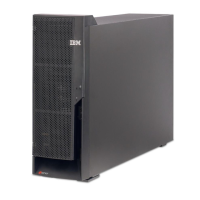

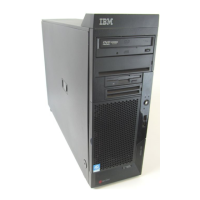
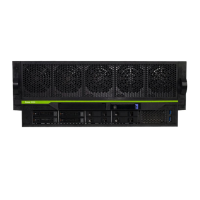




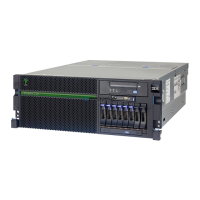

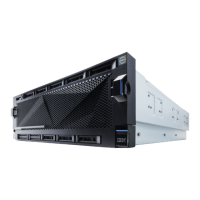

